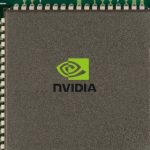In a recent turn of events, an investigation by the National Transportation Safety Board (NTSB) has brought to light the involvement of Ford‘s BlueCruise system in a fatal crash in San Antonio, Texas. This advanced driving aid was active at the time a Ford Mustang Mach-E collided with a stationary Honda CR-V on February 24, 2024, tragically resulting in the death of the Honda’s driver. The NTSB’s findings raise critical questions about the reliability and safety of semi-autonomous driving technology.
The integration of advanced driver-assistance systems (ADAS) in modern vehicles has been a subject of concern and interest in recent years. Investigations into multiple incidents involving such technologies have become increasingly important to understanding their real-world implications. Moreover, the recent crash in San Antonio is not an isolated event. It follows another incident on March 3, 2024, where a Ford Mustang Mach-E with an active driving assistance system was involved in a fatal collision in Philadelphia, suggesting a possible pattern that merits scrutiny.
Details of the San Antonio Incident
The San Antonio police had noted the involvement of “partial automation” in the crash, with the NTSB confirming that the Mustang Mach-E was indeed operating with BlueCruise engaged. A witness ahead of the Mach-E had to manually change lanes to avoid hitting the unlit CR-V, indicating that the automation system failed to detect and react to the stationary vehicle in its path.
Comparative Incidents and Industry Impact
Ford’s BlueCruise system is not alone in facing scrutiny. Tesla‘s Autopilot has also been under the microscope, with the NTSB and National Highway Traffic Safety Administration (NHTSA) conducting several investigations. Tesla responded to these concerns by issuing an over-the-air software update to enhance driver monitoring and alerts when Autopilot is activated. The NTSB is currently collaborating with the Pennsylvania State Police to understand the Philadelphia crash better, with Ford stating it is researching the event and cooperating with both agencies.
In related coverage, ‘The Verge’ published an article titled “Tesla’s Autopilot Faces New Scrutiny,” highlighting ongoing concerns and regulatory steps regarding Tesla’s semi-autonomous feature. Similarly, ‘Engadget’ reported on “Autonomous Vehicle Pitfalls,” emphasizing the broader challenges that the auto industry and regulators are facing as they attempt to integrate autonomous technology safely into public roadways.
Marketing and Reception of BlueCruise
Despite the recent incidents, Ford has actively promoted BlueCruise as a hands-free system for designated highways, receiving accolades from reviewers, including Consumer Reports, which ranked it as the top advanced driving assistance system. BlueCruise is designed to function on a vast majority of highways in the US and Canada that lack intersections and traffic lights.
Implications for the Reader
- BlueCruise’s involvement in recent crashes could influence consumer confidence in semi-autonomous systems.
- Regulatory scrutiny of driver-assist technologies may lead to stricter safety standards and updates.
- Drivers should remain vigilant and not over-rely on ADAS, even with systems that have received high ratings.
The ongoing investigations into Ford’s BlueCruise system underscore a critical juncture in the automotive industry‘s advancement toward autonomous driving. The fatalities linked to the semi-autonomous system in Texas and Pennsylvania highlight the need for more rigorous testing and potentially more stringent regulatory oversight. As the industry moves forward, consumers must stay informed about the capabilities and limitations of these technologies while remaining actively engaged when using such systems.










